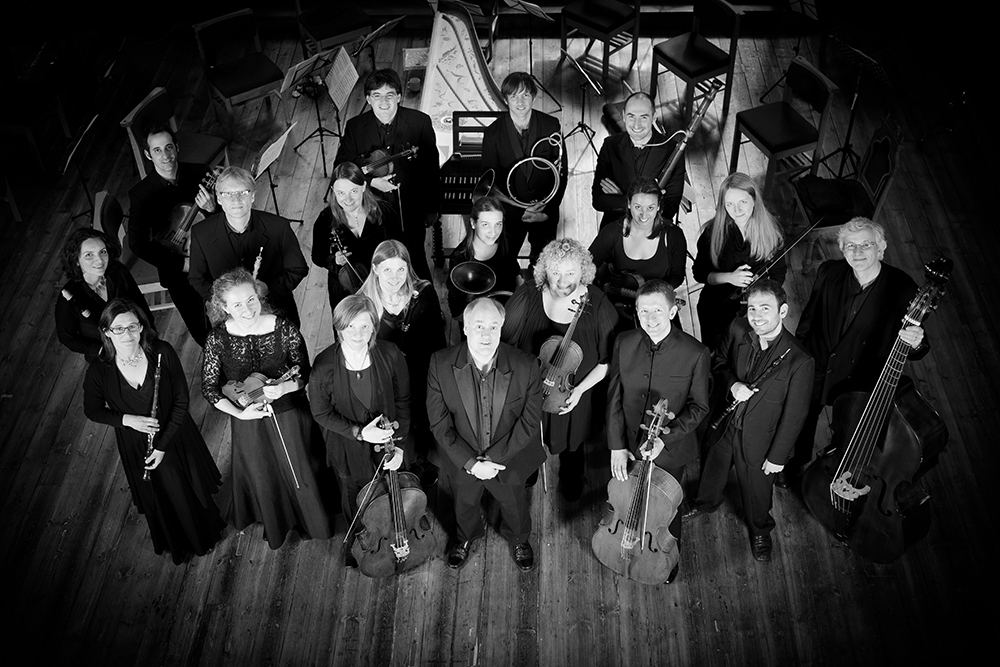The Dunedin Consort are not only Scotland’s (if not Britain’s) finest baroque ensemble, they are also very flexible in their format, which ranges from small groups to full-scale chamber orchestra and choir. Tonight, they are in small group format, with Matthew Truscott and Tuomo Suni on violin; Alfonso Leal del Ojo and Raquel Massadas on viola; and Jonathan Manson on cello. They are accompanied by Tom Foster on an exquisite 18th century harpsichord from the museum at St Cecilia’s Hall, and he is very familiar with the instrument, having given a delightful University lunchtime concert on it already.
The theme of this concert is very much baroque music, with all the European composers featured tonight born in the 17th century. A major revelation is a composer with a strong Scottish connection, Georg Muffat, whose family were Scots (Moffat) although he was born in France. He studied in France and Italy, and was based in Germany, so he is very much a European composer. His major composition was Armonico Tributo, a series of five sonatas composed when he was studying in Rome, and this is the title of tonight’s concert. Two of his five sonatas are accompanied by works by four other European composers: Francesco Navara from Italy, Heinrich Ignaz Franz von Biber from Moravia, Johann Rosenmüller from Leipzig, and Johann Heinrich Schmelzer from Vienna.
The concert begins with a very lively Sonata by Navara, the court composer at Mantua. This is followed by Muffat’s Sonata à 5 from Armonico Tributo No. 1, an important part of his oeuvre, which is thought to bridge European baroque music traditions. It was influenced by Corelli in Rome, but also has connections to the French and German music of the time. This is a delightful baroque work, which shows off both the skills of the string players and the expert accompaniment of the harpsichordist.
This is followed by a humorous composition by Moravian court composer Biber, Sonata Representativa, which illustrates graphically the birds and animals in the area: the nightingale, the cuckoo, the frog, etc. It is a fun composition, with the instruments making some strange sounds to imitate the animals, and predates some modern animal imitation works by hundreds of years! The first part of the concert concludes with a sonata by Rosenmüller, who was as influential as Bach in his day in Leipzig, and later in Venice, where he was resident composer in the Ospedale della Pietá.
The second half of the concert begins with a work by Schmelzer, a leading court composer in Vienna, where clearly fencing was a big sport as this work is called Fechtschule (Fencing School), and is for a court ballet depicting a fencing contest! We then have another work by Biber written for a ballet named Balletti Lamentabile, which ends with a mock sorrowful lament. The concert finishes with another fine work by Muffat, Sonata à 5 from Armonico Tributo, No. 5, whose finale comprises twenty-five variations on a ground bass.
The concert shows the Dunedin Consort to be in fine fettle, even in small format. It displays the virtues of fine harpsichord playing by Tom Foster, on one of the exquisite museum collection instruments, and it has the perfect setting in the beautifully refurbished St Cecilia’s Hall. This is truly a baroque gem in a perfect setting.
